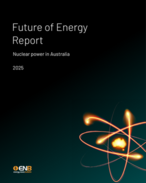"Carbon capture and geological storage technologies applied to coal and gas-fired electricity generation could provide significant opportunities to reduce carbon dioxide emissions over the period to 2050," said ABARE Executive Director Dr Brian Fisher.
The electricity sector currently contributes about 40% of human-generated carbon dioxide emissions, he said.
According to ABARE's report - Near Zero Emissions Technologies - the agency's modelling indicates using carbon capture and geological storage technologies could significantly reduce the economic costs of meeting an international carbon emissions constraint.
This is because carbon capture and geological storage offer most parts of the world additional large-scale emission abatement opportunities, according to ABARE.
Australia’s high dependence on fossil fuels and availability of geological carbon storage sites, means use of these technologies could have a larger impact on reducing the cost of emission reductions than in most other countries, the report said.
"Given the importance of energy in driving economic growth, a technological solution is required to make a significant impact on greenhouse gas emissions without hampering economic development prospects," Fisher said.
"Carbon capture and geological storage technologies will be an important part of this solution.’






















